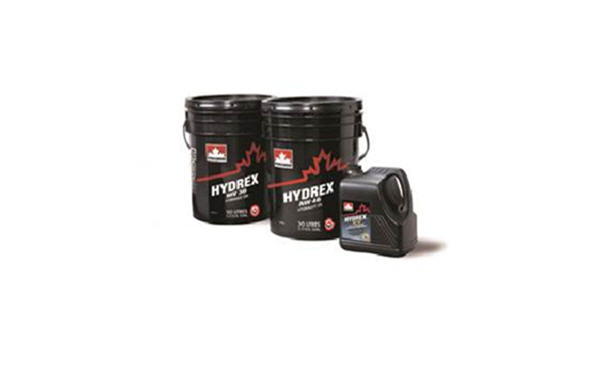 In today’s competitive business environment, even the smallest details can provide a company with a competitive edge. Choosing what type of fluid to use in your hydraulic equipment can make the difference between productivity and inefficiency, between profit and loss.
In today’s competitive business environment, even the smallest details can provide a company with a competitive edge. Choosing what type of fluid to use in your hydraulic equipment can make the difference between productivity and inefficiency, between profit and loss.
Nowhere is this more evident than in areas such as construction, mining and forestry operations, where equipment is expected to perform in harsh environments, through extreme temperature fluctuations and where failure caused by fluid breakdowns can be expensive to fix and even costlier in terms of project delays.
But it’s not just outdoors where hydraulic systems face demanding conditions. Many manufacturing plants are often in continuous operation, striving to meet critical deadlines. That kind of workload on industrial machinery requires hydraulic fluids that protect equipment and help eliminate unscheduled downtime.
“Whether it’s rugged working conditions or a relentless production schedule, companies need advanced protection to keep hydraulic systems up and running,” says Robert Farthing, Hydraulic Oil Category Portfolio Manager, Petro-Canada Lubricants.
Every sector is different, and every operation within each sector presents its own unique challenges. The one thing that will always remain constant across every business is the need for hydraulic fluid to do its job – transfer power and protect the many components of today’s hydraulic systems.
Improve your bottom line with the right fluid plan
David Moore, Plant Manager for Auto Mats and Accessories, knows how vital it is when selecting the right hydraulic fluid to suit specific business demands.
Auto Mats and Accessories specialize in producing all-weather, automotive floor mats. In this line of business, injection moulding machines play a critical role in melting and injecting the vinyl that is used to produce automotive mats. This plant, like many others, presented unique challenges.
“It takes about three hours to start the extruder, heat it up and get the vinyl flowing freely,” says Moore. “We keep our machines running all the time because it is such a nightmare to get them back up once they have been shut down. Having additional downtime because of lubrication change-outs is a cost we don’t want to face.”
Mike Smith of Whitfield Oil, a Petro-Canada Lubricants distributor, did a side-by-side comparison of the competitive products available for the equipment at Auto Mats and Accessories. He also arranged a schedule of regular oil analysis to determine when the machines would need servicing.
“With HYDREX AW we extended drain intervals to two times what we experienced with other products,” says Moore. “The cost savings have been a tremendous benefit.”
With varying factors across the board it doesn’t make sense for every business to follow the same drain intervals. Using an oil monitoring program helps to better understand the oil, conditions and best practices, and also helps save money by safely extending drain intervals until they are actually necessary.
Optimizing your system: The role of oil monitoring in today’s operations
With equipment being pushed to the limit for hours on end, day after day, often in harsh conditions, it is becoming increasingly important that companies use top quality hydraulic fluids that can both persevere and perform.
“A regular review of hydraulic fluids is something many maintenance and purchasing managers often overlook,” says Farthing. “Yet failure to evaluate can result in the use of a low-quality fluid with a short service life that requires frequent top-ups or change-outs. The resulting downtime and repairs can increase maintenance costs, slow production and ultimately reduce profit margins.”
Oil monitoring programs, such as Petro-Canada Lubricants’ Lubri-Test, are low cost, preventative maintenance programs, used to evaluate the condition of lubricants and equipment on a routine basis. The program monitors oil properties such as viscosity, oxidation levels and metals content to help detect abnormal equipment wear and unwelcome contaminants like dust, dirt and water. Oil monitoring programs are also being used to help today’s plant’s extend drain intervals until they are actually necessary.
“Our Lubri-Test uses viscosity and other fluid properties to determine the condition, and decide if the fluid is still suitable for use of it a change is required,” explains Farthing. “Oil monitoring programs like Lubri-Test help plants to extend their drains safely and effectively, avoiding additional costs and increased downtime.”
For Auto Mats and Accessories, the implementation of an oil analysis program was a key factor in the success of their lubrication plan. Every six to eight months, with the help of their Petro-Canada distributor, they take a sample to determine oil quality and drain interval needs. Extending drain intervals has saved them approximately 200-300 gallons of fluid and 8-10 hours per year of downtime for each of their machines.
Like any system, a good preventative maintenance schedule and proper maintenance practices are vital to performance – it’s about knowing your machines and your fluids inside out.
“By reviewing the performance of their hydraulic fluids, many companies have been able to reduce unscheduled downtime, improve equipment reliability and extend equipment life,” says Farthing. “The results of reduced maintenance costs and improved equipment performance help build a stronger bottom line.”
The tougher the job, the stronger your hydraulic fluid needs to be. If you haven’t analyzed your oil in a while, now is a good time to assess whether you’re getting the best performance and protection possible. It’s a relatively easy way to meet the extreme demands on your equipment and your business.